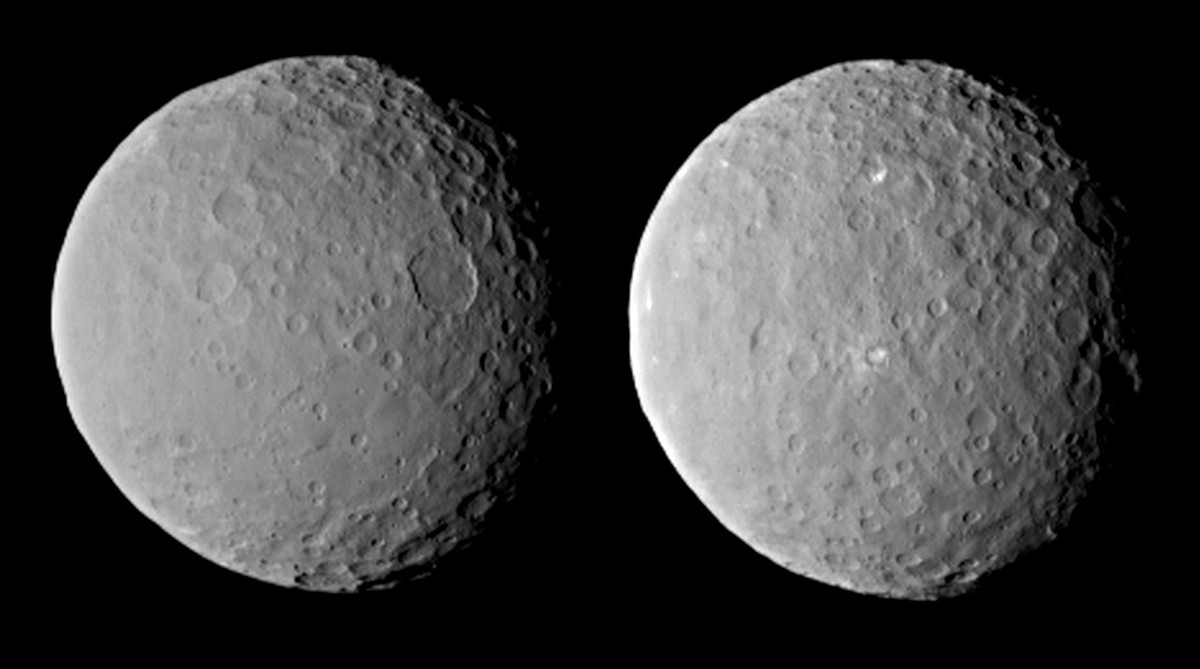Astronomers discover that the planet Ceres dwarf emits water vapor jets
2014/01/23 Galarraga Aiestaran, Ana - Elhuyar Zientzia Iturria: Elhuyar aldizkaria

Astronomers have seen the dwarf planet Jet of steam launch thanks to the ESA's Herschel telescope. The phenomenon was seen in four observations made in October 2012 and March 2013, which appear to shed 21 tons of water vapor per hour of two dark spots on its surface.
Astronomers have published the results of observation in the journal Nature and have proposed the origin of water vapor. According to them, the ice that is under the skin can come from the sublimation of the Sun or volcanic activity. However, according to a hypothesis of recent years, the water of the Earth would come from the collision of comets or asteroids. Therefore, the observation made in Ceres reinforces this hypothesis in part.Zeres orbits in the asteroid belt and is located at 2.7 astronomical units (nano planet category since 2006). To calculate water emissions, scientists have measured the absorption of steam jets by infrared radiation emitted by the rock. Thus they have discovered that it emits 6 kilos of water per second (specifically 1026 molecules per second), which, according to astronomers, is relatively little considering the size of the dwarf planet. It is the largest belt body of asteroids: It has a diameter of 950 km and an area equivalent to India. Of this water it is believed that most of the space is lost, but around 20% would fall the surface of the dwarf planet. However, they do not expect an atmosphere to be generated around Ceres.
On the other hand, although the amount of water that Zeres has is not very large, it is much higher than that which has a similar asteroid, Vesa. For astronomers the difference between them is significant, which means that they have probably occurred in different aspects of the solar system.
In addition to water, they have analyzed the movement of Ceres and other bodies of the asteroid belt. Thanks to this, new indications of how planetary systems are formed have been collected. In fact, the first collisions against asteroids and comets affected the orbit of the great planets. And next year they will have more information about Ceres, when the NASA's Dawn mission probe, launched in 2007, will reach the nano planet with the aim of completing the map of Ceres' surface.

Gai honi buruzko eduki gehiago
Elhuyarrek garatutako teknologia





